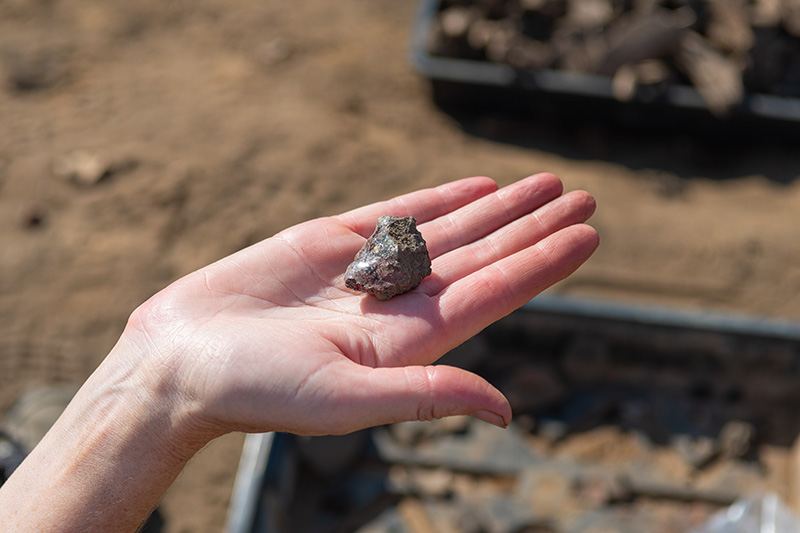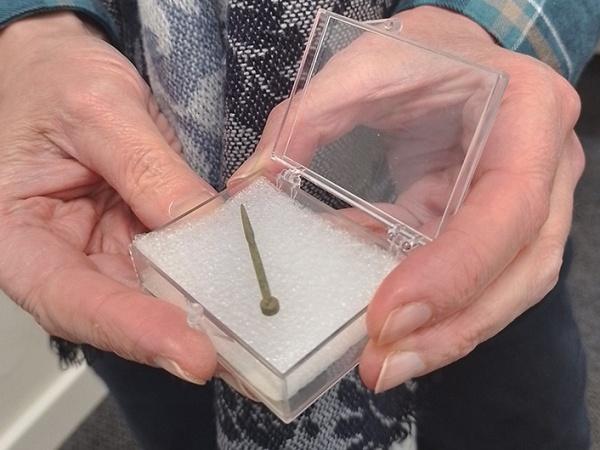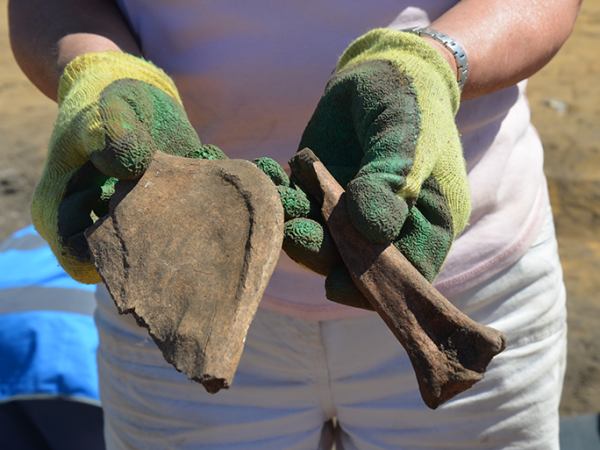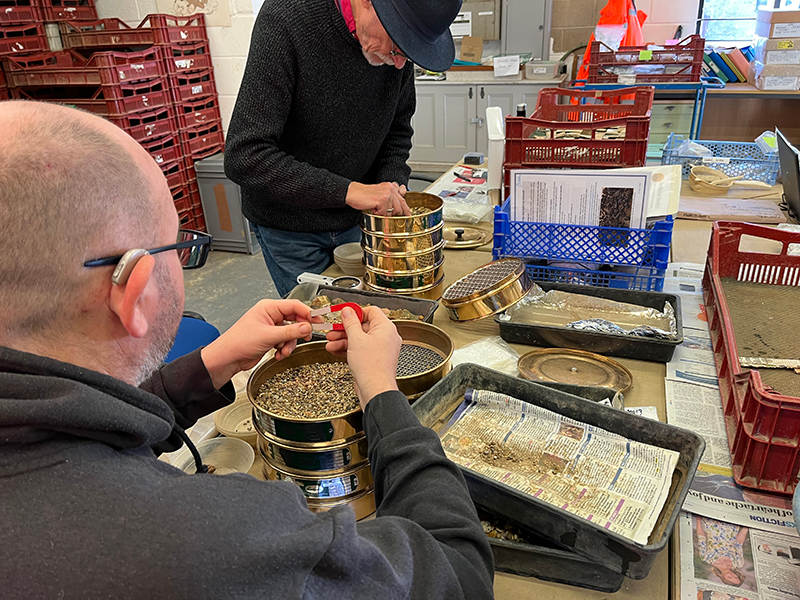Featured image: Volunteers finding metalworking waste at the excavations
Eleanor Blakelock is the Rendlesham Revealed project archaeometallurgist, who specialises in investigating metalworking assemblages from the past. She has completed the initial analysis of the artefacts excavated from Rendlesham in 2023. Eleanor is our guest writer this week to tell us more.
Although a long and complicated title, an archaeometallurgist basically just studies ancient metalworking technology and processes, often through the examination of the waste products. The first job when working with an assemblage is to divide the metalworking waste found into different types of material. There are two main types of metalworking represented at Rendlesham: ironworking and non-ferrrous metalworking (copper alloys, silver and gold) – both produce very different types of finds.
There was only a small quantity of iron slag (the waste product from the production of iron) found during this summer’s excavation, this suggests that any production and smithing of iron was not taking place near the excavations. This makes sense as we don’t think they were making iron at Rendlesham itself, and certainly not within what appears to be a higher status area.
This summer we had some exciting evidence for other types of metalworking processes, most of which was recovered from the large enclosure ditch. A single fragment of crucible was recovered, this small clay vessel would have been used to pour the molten metal into the moulds to form objects. We also had lots of pieces of waste metal, droplets, several sprues and also several objects where the casting process has not worked. All these point to a metalworking workshop somewhere nearby.


The most exciting part of the assemblage was the large number of moulds fragments found, these are rarely found on Early Medieval sites. Each mould fragment can help us piece together the technology and methods used by the ancient metalworkers. The highlight for many last season was a mould fragment that had fine interlace decoration, possibly from a disc brooch or harness fitting.

However, for me, it was the basic moulds fragments that turned out to be really interesting. During previous study of metal objects from Rendlesham I hypothesised that the moulds at Rendlesham were complex, with multiple objects being cast at a time. This was however based on observations of incomplete or failed objects found and could not be proven at the time. The 2023 excavation has now confirmed this theory as you can clearly see in these mould fragments that more than one object was being cast at a time.


Find out more
Watch Eleanor Blakelock’s video on “Metalworking at an Anglo-Saxon Palace: Analysis of copper alloys and precious metal objects from Rendlesham” (filmed 2020)
What is involved in post-excavation? Read the first year’s blogs to learn more.
Discover more about the Rendlesham Revealed community fieldwork discoveries.
Learn about the previous archaeological investigations since 2008
This fieldwork is part of the community archaeology project Rendlesham Revealed: Anglo-Saxon Life in South-East Suffolk, funded by the National Lottery Heritage Fund. We are very grateful to our many local and national partners who have made this project possible, and for the support of our volunteers and of the landowners and farmers who work and manage this historic landscape.






